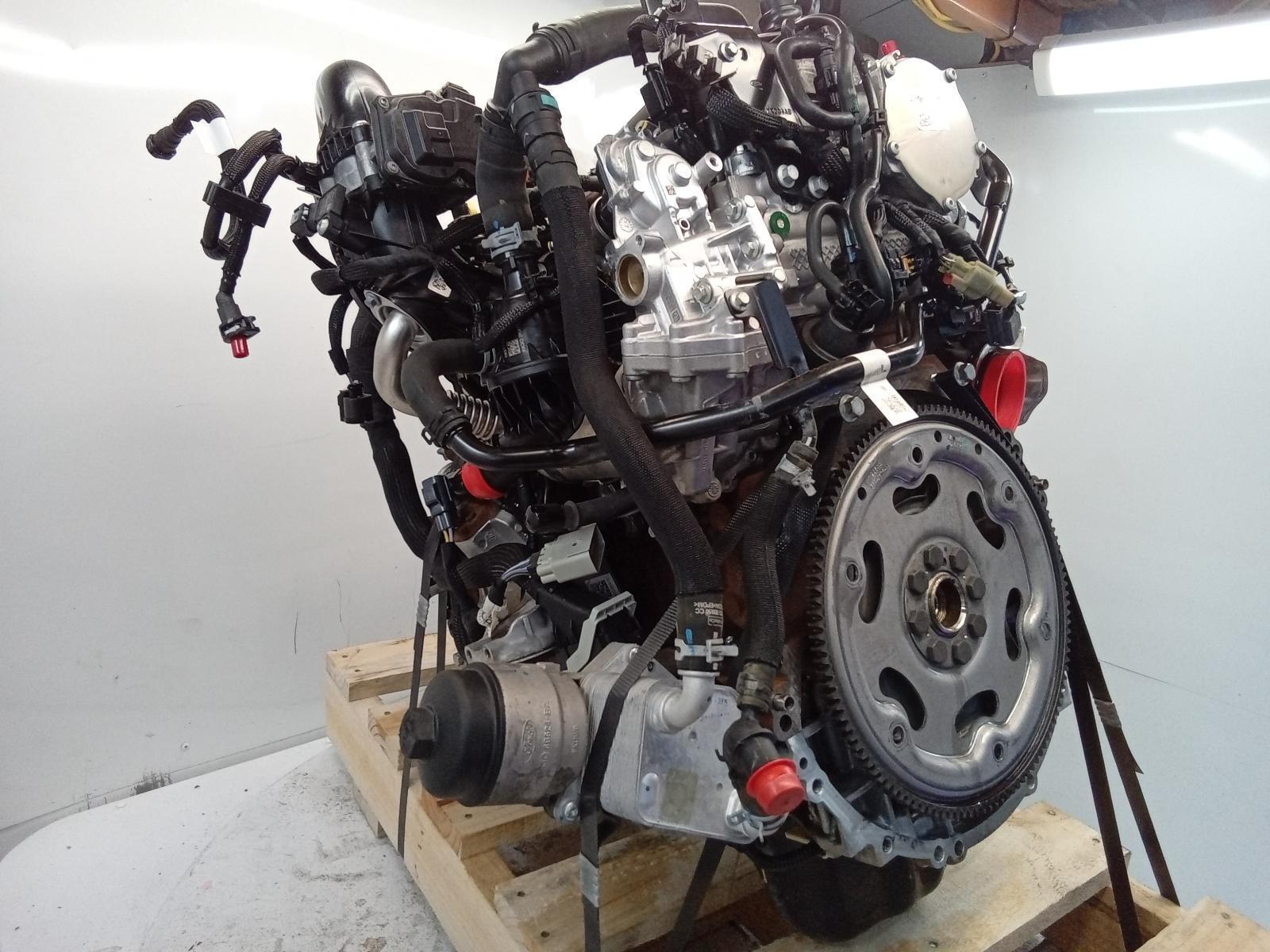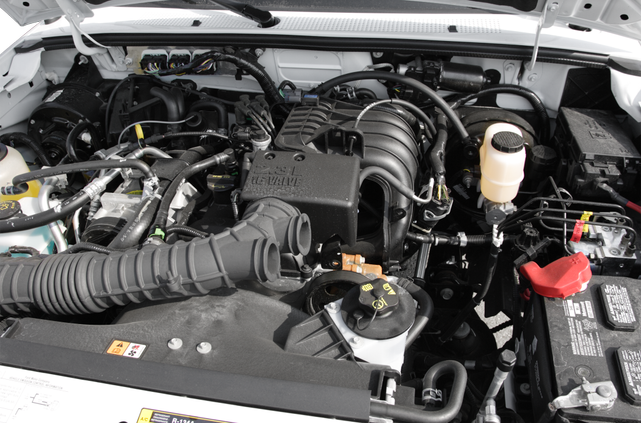Everything You Need to Know About the 2.2 Ford Ranger Engine and Its Performance
Everything You Need to Know About the 2.2 Ford Ranger Engine and Its Performance
Blog Article
Understanding the Essentials of Vehicle Engines: Kinds, functions, and features

Summary of Auto Engines
A car engine acts as the heart of a car, transforming gas right into power to move it forward. This elaborate system makes up numerous parts that work in unison to make sure optimal performance and effectiveness. The basic procedure of an automobile engine includes the interior burning procedure, wherein fuel and air are mixed, fired up, and gotten rid of to create power.
The engine's style can considerably influence its efficiency, gas effectiveness, and emissions. Key components include the cyndrical tube block, pistons, crankshaft, and camshaft, each playing a vital duty in the engine's general function.
In addition to these elements, engines usually use different systems such as gas shot, ignition, and cooling systems to enhance efficiency and durability. Comprehending the basic technicians of auto engines is crucial for executing and identifying issues upkeep, eventually adding to the car's integrity and effectiveness in time.

Sorts Of Automobile Engines
Auto engines can be classified into a number of types based on their style, gas kind, and functional concepts. 2.2 ford ranger engine. One of the most typical groups consist of inner burning engines (ICE), electrical engines, and crossbreed engines
Internal combustion engines, which can be more separated right into fuel and diesel motor, run by igniting a fuel-air blend to generate power. Fuel engines are generally lighter and smoother, while diesel engines are more fuel-efficient and offer greater torque.
Electric engines make use of electrical power kept in batteries to power an electrical motor, giving instantaneous torque and absolutely no discharges throughout operation. As innovation developments, electrical automobiles (EVs) are significantly becoming popular for their environmental benefits and lower running costs.
Crossbreed engines integrate elements of both internal burning and electrical engines, enabling versatile source of power and improved gas performance. They can operate in various settings, making use of either the gas engine, the electric motor, or both concurrently.
Each kind of engine has unique advantages and negative aspects, affecting their application in different lorry types and market sectors, from small vehicles to sturdy vehicles. Understanding these types is vital for making notified choices relating to car selection and performance assumptions.
Engine Features Described
Recognizing engine functions is critical for understanding how automobiles run efficiently. At the core of any type of inner burning engine exists the basic procedure of transforming fuel into mechanical energy.
The ignition happens following, firing up the combination and developing a rapid development of gases. This pressure drives the piston down during the power stroke, which eventually translates into the rotational movement of the crankshaft. The exhaust stroke then eliminates the spent gases from the chamber, making way for a new cycle to begin.
In addition to these main functions, engines likewise integrate systems that handle air conditioning and lubrication, making certain optimum functional temperature levels and lowering rubbing in between relocating components. This complex interaction of features allows the engine to create the power needed for automobile propulsion while preserving efficiency and reliability. Understanding these features supplies beneficial understanding into the complexities of automobile engineering and boosts the capacity to detect and resolve engine-related concerns properly.
Trick Engine Features
Engine design encompasses numerous vital functions that dramatically affect durability, performance, and efficiency. Among one of the click to read most crucial facets is the engine setup, which includes inline, V-type, and level designs. Each setup affects the engine's power, size, and balance result, thereby affecting overall automobile characteristics.
Another necessary feature is the engine displacement, describing the total volume of all cyndrical tubes. Larger variations typically generate even more power but may endanger fuel effectiveness. Engine materials likewise play a critical function; lightweight and high-strength materials, such as light weight aluminum and magnesium alloys, improve performance without adding extreme weight.
The kind of gas injection system employed-- such as multi-port or direct shot-- impacts burning performance and emissions. Turbocharging and supercharging are attributes that enhance engine efficiency by forcing additional air right into the burning chamber, boosting power result without substantially raising engine dimension.
Last but not least, the presence of sophisticated engine administration systems optimizes fuel-air blend and ignition timing, adding to smoother operation and much better gas economy. Jointly, these functions define an engine's capacities, setting the structure for its performance and long life in a competitive automobile landscape.
Upkeep Tips for Engines
Correct engine maintenance is important for guaranteeing ideal performance and long life, as neglecting routine care can lead to substantial issues down the line. To maintain your engine effectively, begin with routine oil changes, generally every 3,000 to 7,500 miles, depending upon the type of oil used. Fresh oil lubes engine elements, reducing rubbing and wear.
Furthermore, keeping an eye on coolant levels is essential to protect against overheating. Ensure that the coolant is covered up and is in great condition to keep effective temperature level guideline. On a regular basis examine and change air and fuel filters, as clogged up filters can impede airflow and gas shipment, compromising engine performance.
Additionally, pay attention to ignition system and ignition systems. Damaged or used ignition system can bring about misfiring and minimized performance. Inspecting the battery terminals and connections for deterioration is additionally important, as a weak battery can impact engine starting.

Conclusion
In recap, an extensive understanding of car engines incorporates various kinds, functions, and vital features that dramatically influence automobile performance. Interior combustion engines, in addition to electric and hybrid options, show varied mechanisms for power conversion. 2.2 ford ranger engine. Identifying the crucial features, such as consumption and exhaust cycles, together with critical engine functions like configuration and fuel injection systems, outfits automobile proprietors with the understanding needed for effective maintenance and procedure, ultimately boosting car long life and effectiveness
A vehicle engine offers as the heart of a car, transforming gas into mechanical energy to thrust it ahead. The fundamental operation of a cars and truck engine involves the inner combustion process, where fuel and air are blended, sparked, and eliminated to create power.
On a i loved this regular basis evaluate and change air and gas filters, as stopped up filters can prevent air movement and gas distribution, endangering engine performance. - 2.2 ford ranger engine
In recap, a thorough understanding of car engines encompasses various types, functions, and crucial attributes that dramatically affect automobile performance. Acknowledging the necessary functions, such as intake and exhaust cycles, alongside vital engine functions like setup and fuel injection systems, outfits auto proprietors with the understanding needed for efficient maintenance and procedure, ultimately enhancing vehicle durability and effectiveness.
Report this page